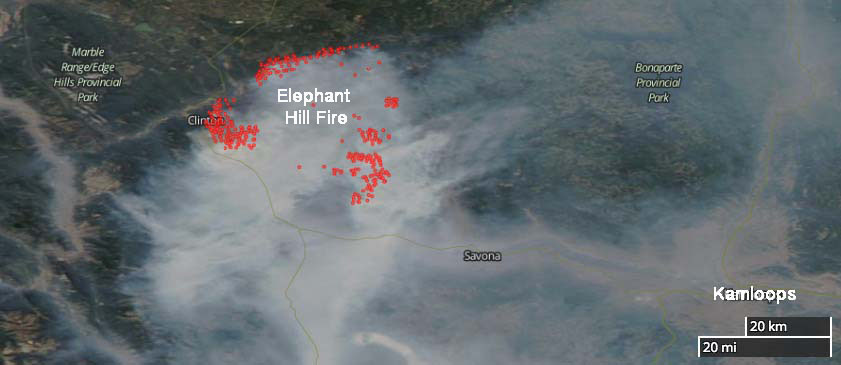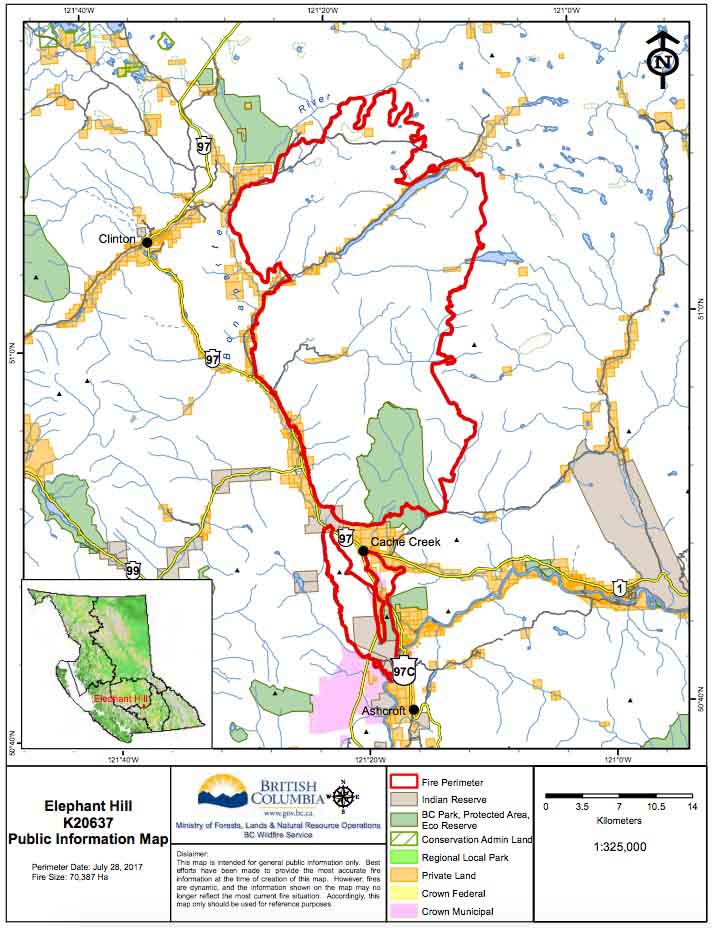Above: Satellite photo taken August 2, 2017 showing smoke from some of the wildfires in British Columbia. The red dots represent heat detected by a sensor on the satellite
(Originally published at 9:50 p.m. MDT August 2, 2017)
Firefighters in British Columbia are dealing with over 100 wildfires that are larger than 0.01 hectare. The location for four of the largest can be seen on the map below which shows heat detected by a satellite on Wednesday.

Here are very brief of summaries of four of the largest fires:
- Hanceville-Riske Creek, 60 kilometers southwest of Williams Lake. The Hanceville and the Riske Creek Fires are being managed as one. Together they have burned 134,000 hectares (331,000 acres).
- Quesnel West, 4 km north of the Baezaeko River. 36,000 HA (88,000 acres).
- Tautri Complex, 85 km northwest of Williams Lake. 64,000 HA (84,000 acres).
- Elephant Hill, near Ashcroft. 84,000 HA. (207,000 acres).
The weather forecast for Ashcroft near the Elephant Hill fire looks grim for firefighters — over 100F every day for the next week with the relative humidity around 20 percent or below. It looks better for Williams Lake with highs in the high 80’s and low 90’s with the relative humidity in the mid-20’s.




